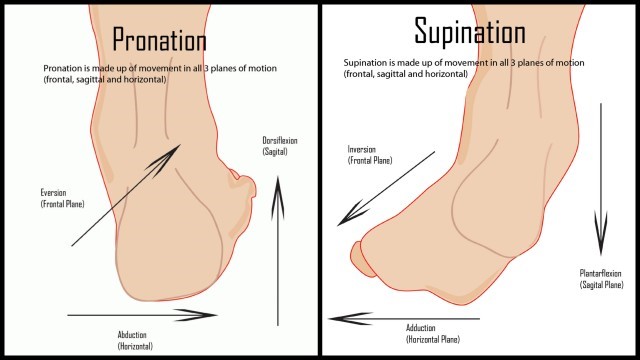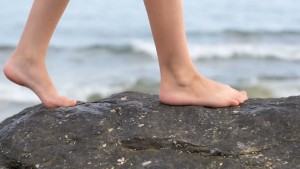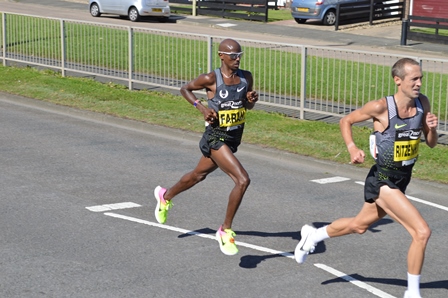The issue of pronation causes concern amongst a lot of sports people, especially runners. At Newcastle Sports Injury Clinic, our podiatrists are experts in biomechanics and gait analysis – here they explain what pronation is, why some pronation is normal, and when you should be worried about your pronation.
What is Pronation?
Pronation is a tri-planar movement which involves:
- Abduction, eversion and dorsiflexion of the subtalar joint
The opposite of pronation (supination) involves the opposite tri-planar motion:
- Adduction, inversion, plantarflexion of the subtalar joint
Both these motions are important and neither is abnormal.
Pronation is normal!
Often clinicians like to categorise feet into supinated, neutral or pronated which can be confusing. In fact, during the gait cycle, the foot moves from supination at heel strike to pronation at mid stance, back to supination for toe off. Pronation helps the foot adapt to surfaces, increases the surface area and is a necessary shock absorber. Without pronation, the foot would be held rigid and walking would be made much more difficult.
‘Over-pronation’ or ‘Excessive Pronation’
Social media and shoe shops often refer to ‘over-pronation’ or ‘excessive pronation’, which is confusing and unhelpful, as pronation is a normal part of the gait cycle. This does not necessarily mean you need a certain type of footwear to prevent the pronation occurring, especially if you are not experiencing any discomfort.
Pronation only becomes a problem when it prevents you from carrying out aspects of daily life due to pain, swelling or tightness. Often you won’t notice the pronation but you will notice when there is a problem. Over-pronation can be a factor in the development of:
- Plantar fasciitis
- Achilles tendinopathy
- Bunions
- Bursitis
- Haglund’s Bump
Advice on pronation
When pronation becomes a problem and you are worried it has, or may, develop into a painful condition, visit your podiatrist who will be able to advise on the following:
- Footwear – A trainer with medial arch support, adequate cushioning in the midsole and a flared heel for stability can be effective at preventing the pronation occurring at a time when it should be supinating.
- Orthotics – Like footwear, orthotics can change the way the foot moves to the gait cycle so that excessive strain is not caused by pronation occurring at the wrong time.
- Clinical investigation – A biomechanical assessment can be helpful in identifying the cause of prolonged or untimely pronation. A podiatric assessment at Newcastle Sports Injury Clinic involves the assessment of how your feet and lower limb work including the hip, knee and pelvis. The assessment focuses on the movement of the joints in the foot, foot posture and how this can affect the lower limb, including the knee and hip. The Podiatrist can identify if a patient’s injury is caused by poor structural alignment or function by assessing a patient’s biomechanical structure, using a range of techniques, including gait analysis
- Lose weight – If necessary try to lose some weight: if you are overweight this will increase the load your feet support, therefore any weight loss will be beneficial
- Stretching and Strengthening – The podiatrist can advise on exercises which will help aid in the recovery of painful conditions that may arise.
If you are concerned about pronation – especially if you believe it may be causing you pain, restriction of movement or specific injury – then Newcastle Sports Injury Clinic can carry out a full biomechanical assessment. Contact us today on 0191 233 0500 to arrange an appointment.



